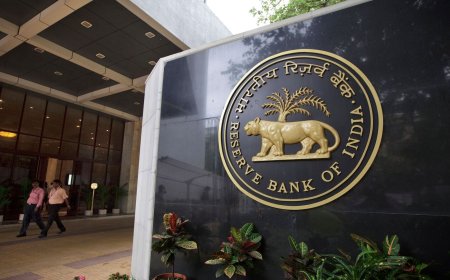Vault Matters | Bank or NBFC, the valuation dilemma
Explore the valuation puzzle between Indian banks and NBFCs. Understand market trends, analyst insights, and how investors can navigate the financial sector's evolving dynamics.

India’s financial sector is at a curious crossroads. Traditional banks and nimble non-banking financial companies (NBFCs) are vying for investor attention—but with widely differing valuation metrics. The question that perplexes both seasoned investors and market newcomers alike is: Should you bet on a bank or an NBFC? This valuation dilemma isn’t just theoretical—it’s impacting capital flows, portfolio allocations, and long-term investment strategies.
The Fundamentals: Banking vs NBFC Business Models
At the heart of the debate lies a fundamental difference in business models. Banks enjoy access to low-cost deposits, regulatory backing via the Reserve Bank of India (RBI), and a well-diversified loan book. NBFCs, on the other hand, thrive on niche lending, faster credit processing, and often cater to underserved segments like microloans, consumer durables, and MSMEs.
“The biggest differentiation is on liability sourcing,” says Ashish Vora, Head of Financial Sector Research at QuantAxis. “Banks have a structural advantage due to CASA (Current Account Savings Account) deposits, while NBFCs rely heavily on borrowing, often at higher costs.”
Valuation Metrics: A Tale of Two Multiples
Banks are typically valued using Price-to-Book (P/B) and Return on Assets (RoA) ratios, while NBFCs may see more emphasis on Price-to-Earnings (P/E) due to their higher risk and growth-oriented models.
For example, HDFC Bank trades at a P/B of around 2.4x, while Bajaj Finance, a leading NBFC, commands a P/E multiple of nearly 35x. The disparity is stark—and it’s driving debate among equity strategists.
“NBFCs get premium valuations because of their growth visibility and digital agility,” says Shweta Narang, Fund Manager at Karuna Asset Management. “But they also carry higher systemic risk and regulatory uncertainty.”
Market Context: Credit Boom, Risk Watch
India is witnessing a robust credit demand, particularly in the retail and MSME segments. This has benefitted both banks and NBFCs, but with varying impact.
According to RBI data, bank credit grew by 14.1% year-on-year in FY25 Q1, while NBFCs reported growth upwards of 18-20%, driven by personal loans and gold financing.
However, the credit boom comes with risks. Rising household indebtedness, interest rate volatility, and asset quality deterioration—especially in unsecured lending—could disproportionately affect NBFCs.
Regulatory Lens: RBI's Clampdown on NBFCs
Recent actions by the RBI have put NBFCs under a sharper regulatory lens. The central bank has increased scrutiny on digital lending, asset-liability mismatches, and capital adequacy norms.
“RBI is gradually pushing NBFCs toward a bank-like structure,” notes Dr. Aniket Kulkarni, financial economist at IIFL Securities. “The regulatory arbitrage that once favored NBFCs is narrowing, and that has valuation implications.”
This has led some investors to rethink their exposure to high-growth NBFCs, especially those involved in riskier lending practices.
Recent Stock Trends: Divergence in Investor Sentiment
The performance divergence is evident in recent market behavior. While banks like ICICI Bank and Axis Bank have delivered stable, double-digit returns over the last 12 months, several NBFCs have seen either hyper-growth or steep corrections.
For instance, Bajaj Finance has faced bouts of selling pressure post its Q4 FY24 results, amid concerns of rising provisions. Conversely, Muthoot Finance and Manappuram Finance have gained traction amid a gold price rally and strong rural credit demand.
Investor Outlook: Balancing Growth and Stability
For long-term investors, the choice between a bank and an NBFC boils down to risk appetite, time horizon, and macro outlook. Analysts suggest a diversified approach, combining the relative stability of banks with the high-growth potential of select NBFCs.
“Banks offer resilience and regulatory comfort, making them ideal core portfolio holdings,” says Rohit Gera, CIO of Capital Axis PMS. “But a tactical allocation to well-managed NBFCs can boost alpha, provided risk is capped.”
A Vault Worth Watching
The valuation dilemma between banks and NBFCs is not just a number game—it reflects the evolving dynamics of India’s credit ecosystem. As both segments face changing regulatory expectations, rising credit demand, and evolving customer behavior, investors must look beyond headline multiples.
In the end, whether you open your vault for a bank or an NBFC, the key is disciplined allocation and continuous monitoring. The sector may be split in structure, but in a bullish economy, both doors can lead to wealth—if unlocked wisely.
What's Your Reaction?
 Like
0
Like
0
 Dislike
0
Dislike
0
 Love
0
Love
0
 Funny
0
Funny
0
 Angry
0
Angry
0
 Sad
0
Sad
0
 Wow
0
Wow
0












































































